Abstract
Isoenzyme and protein profiles of clinical isolates initially identified as Candida haemulonii demonstrated the presence of two distinct groups. DNA relatedness studies with representative cultures confirmed the presence of two species. Physiological features that can be used to separate two groups within C. haemulonii are reported.
Full text
PDF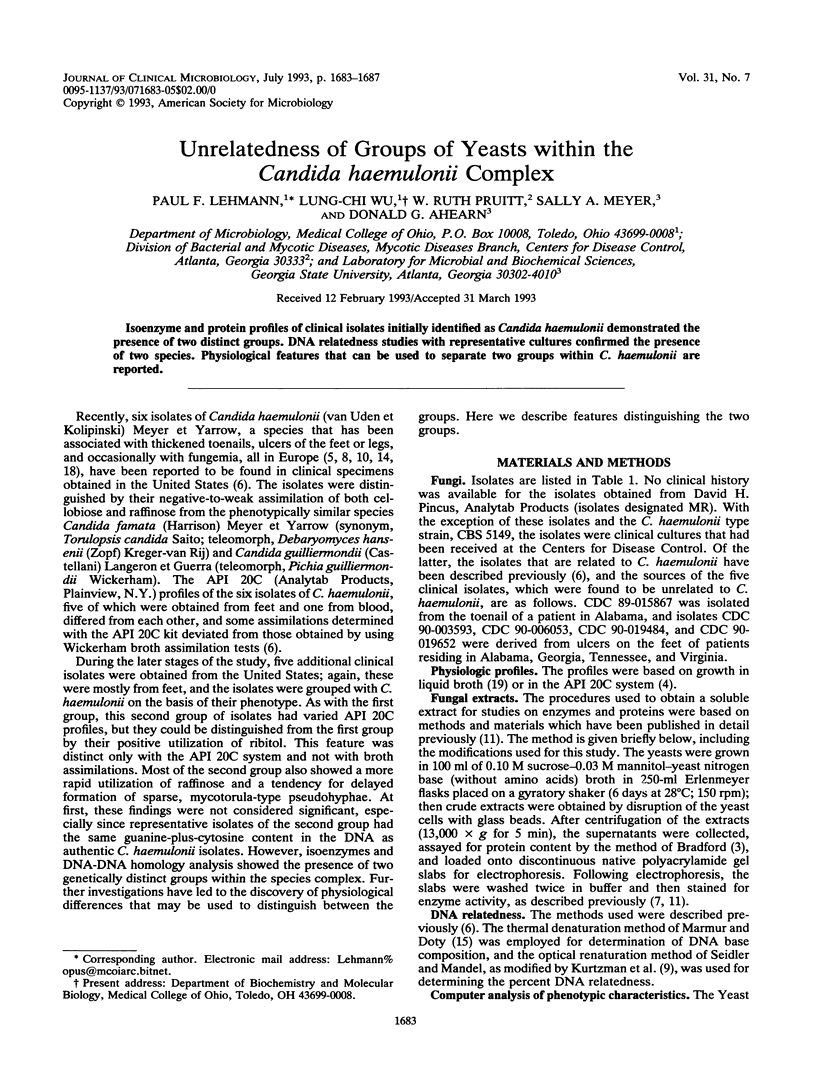
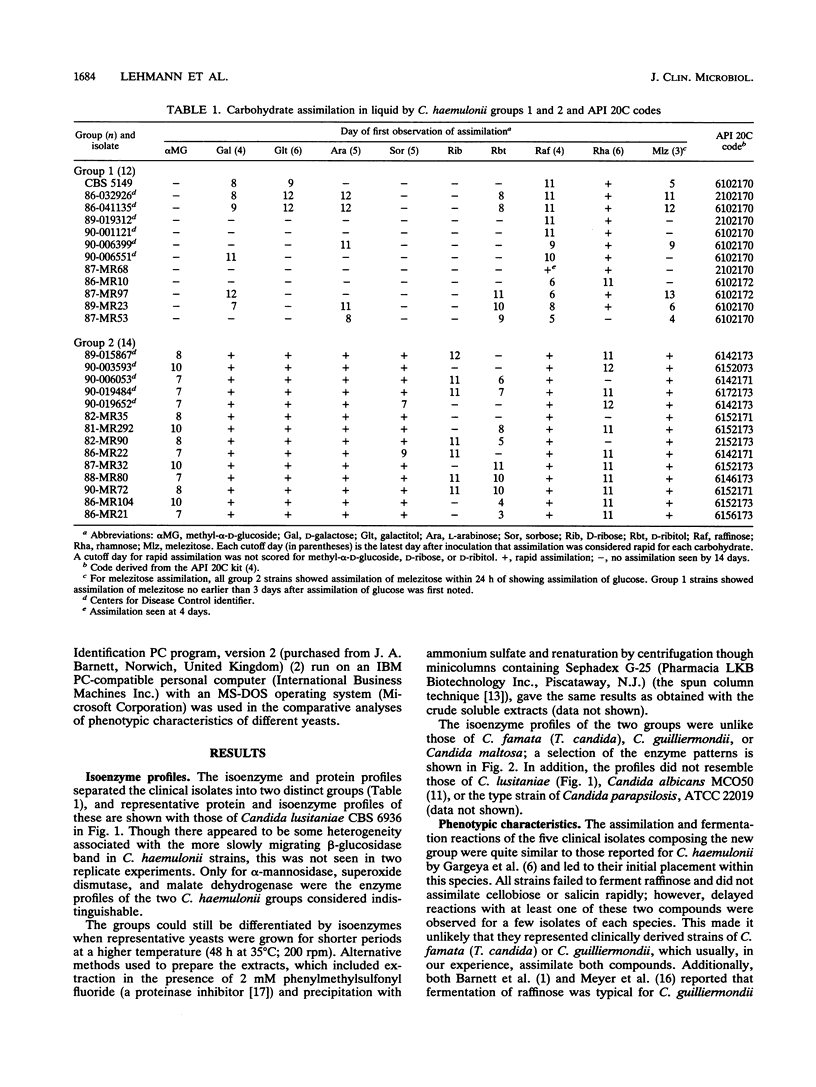
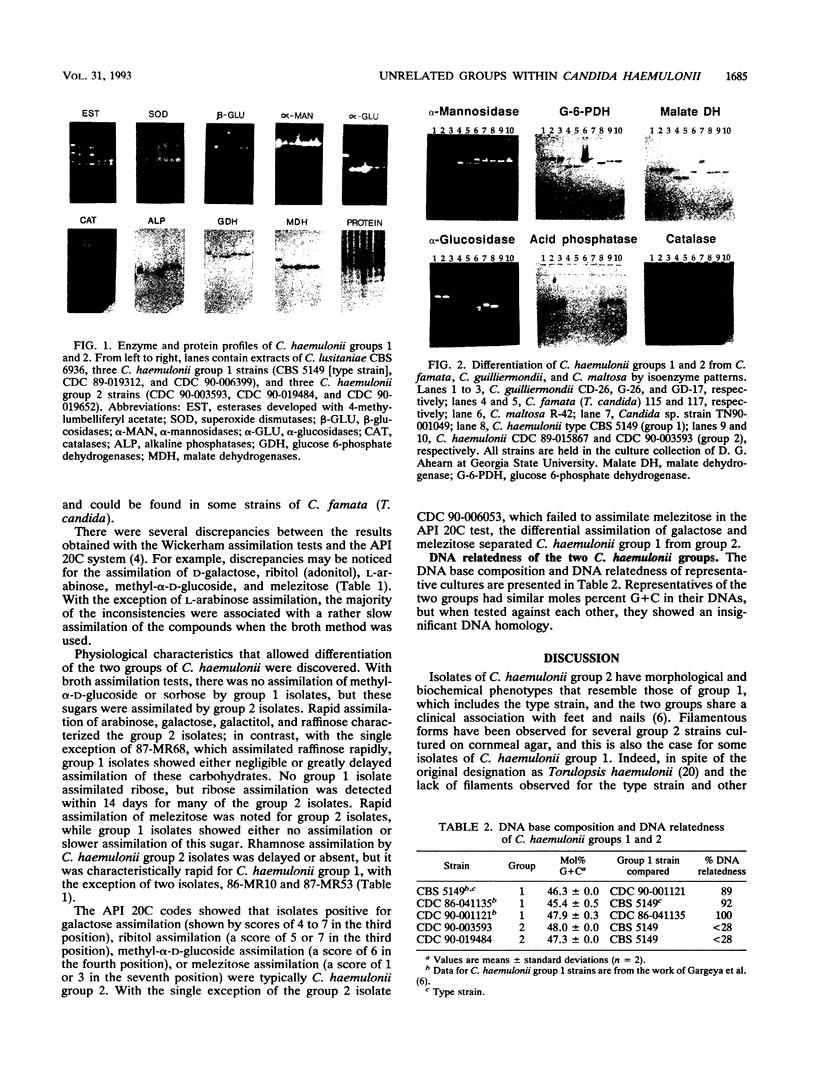
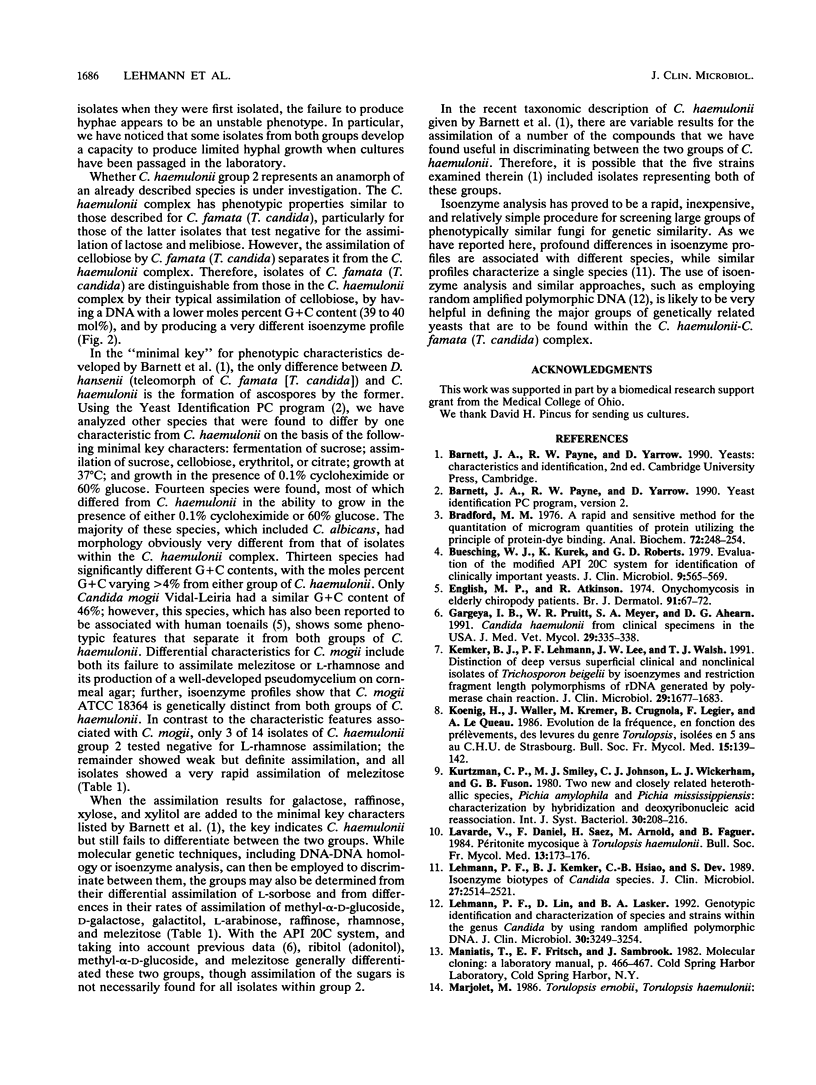
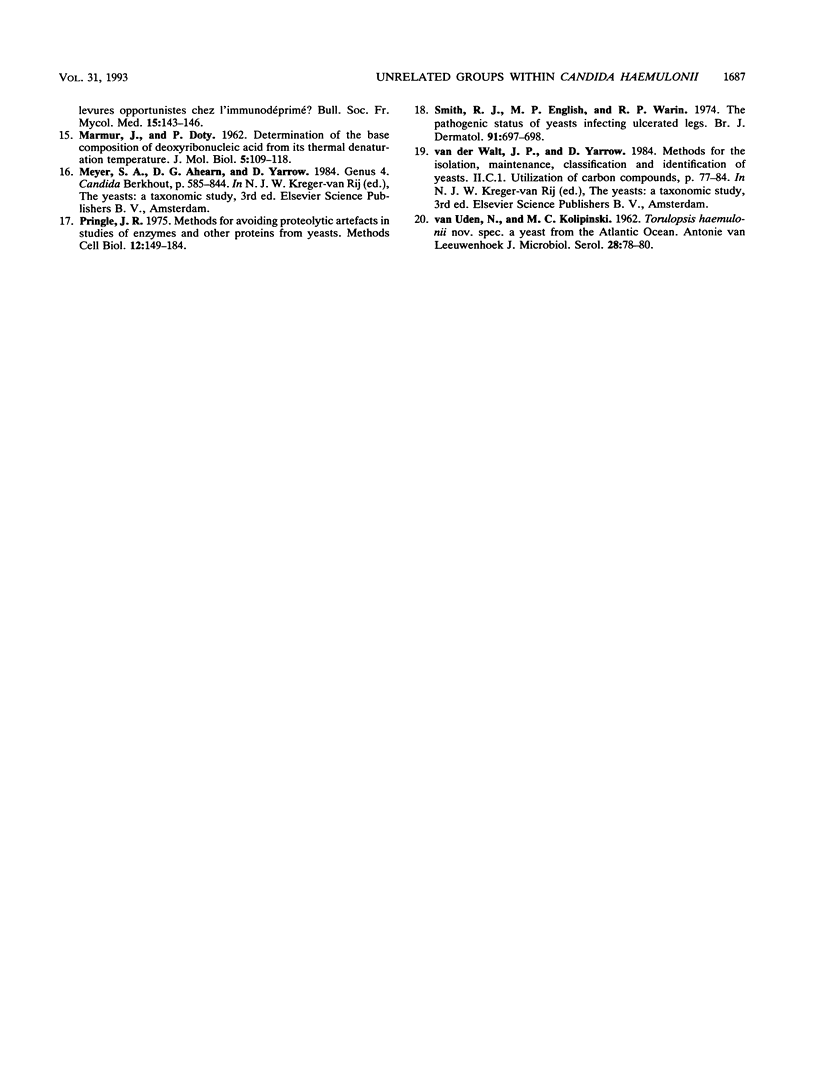
Images in this article
Selected References
These references are in PubMed. This may not be the complete list of references from this article.
- Bradford M. M. A rapid and sensitive method for the quantitation of microgram quantities of protein utilizing the principle of protein-dye binding. Anal Biochem. 1976 May 7;72:248–254. doi: 10.1016/0003-2697(76)90527-3. [DOI] [PubMed] [Google Scholar]
- Buesching W. J., Kurek K., Roberts G. D. Evaluation of the modified API 20C system for identification of clinically important yeasts. J Clin Microbiol. 1979 May;9(5):565–569. doi: 10.1128/jcm.9.5.565-569.1979. [DOI] [PMC free article] [PubMed] [Google Scholar]
- English M. P., Atkinson R. Onychomycosis in elderly chiropody patients. Br J Dermatol. 1974 Jul;91(1):67–72. doi: 10.1111/j.1365-2133.1974.tb06718.x. [DOI] [PubMed] [Google Scholar]
- Gargeya I. B., Pruitt W. R., Meyer S. A., Ahearn D. G. Candida haemulonii from clinical specimens in the USA. J Med Vet Mycol. 1991;29(5):335–338. [PubMed] [Google Scholar]
- Kemker B. J., Lehmann P. F., Lee J. W., Walsh T. J. Distinction of deep versus superficial clinical and nonclinical isolates of Trichosporon beigelii by isoenzymes and restriction fragment length polymorphisms of rDNA generated by polymerase chain reaction. J Clin Microbiol. 1991 Aug;29(8):1677–1683. doi: 10.1128/jcm.29.8.1677-1683.1991. [DOI] [PMC free article] [PubMed] [Google Scholar]
- Lehmann P. F., Kemker B. J., Hsiao C. B., Dev S. Isoenzyme biotypes of Candida species. J Clin Microbiol. 1989 Nov;27(11):2514–2521. doi: 10.1128/jcm.27.11.2514-2521.1989. [DOI] [PMC free article] [PubMed] [Google Scholar]
- Lehmann P. F., Lin D., Lasker B. A. Genotypic identification and characterization of species and strains within the genus Candida by using random amplified polymorphic DNA. J Clin Microbiol. 1992 Dec;30(12):3249–3254. doi: 10.1128/jcm.30.12.3249-3254.1992. [DOI] [PMC free article] [PubMed] [Google Scholar]
- MARMUR J., DOTY P. Determination of the base composition of deoxyribonucleic acid from its thermal denaturation temperature. J Mol Biol. 1962 Jul;5:109–118. doi: 10.1016/s0022-2836(62)80066-7. [DOI] [PubMed] [Google Scholar]
- Pringle J. R. Methods for avoiding proteolytic artefacts in studies of enzymes and other proteins from yeasts. Methods Cell Biol. 1975;12:149–184. doi: 10.1016/s0091-679x(08)60956-5. [DOI] [PubMed] [Google Scholar]
- Smith R. J., English M. P., Warin R. P. The pathogenic status of yeasts infecting ulcerated legs. Br J Dermatol. 1974 Dec;91(6):697–698. doi: 10.1111/j.1365-2133.1974.tb12456.x. [DOI] [PubMed] [Google Scholar]
- van UDEN, KOLIPINSKI M. C. Torulopsis haemulonii nov. spec., a yeast from the Atlantic Ocean. Antonie Van Leeuwenhoek. 1962;28:78–80. doi: 10.1007/BF02538724. [DOI] [PubMed] [Google Scholar]




